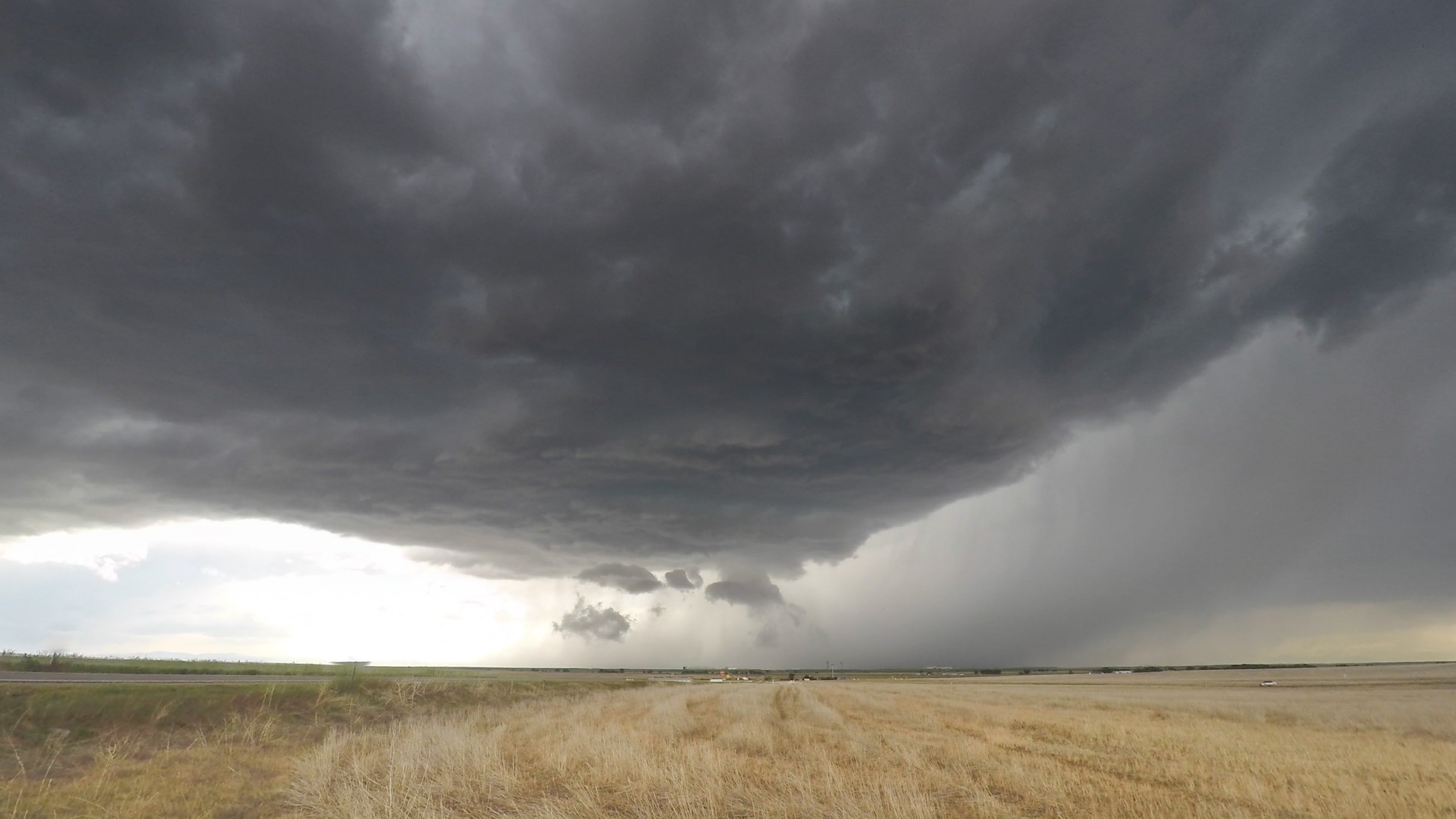Cumulonimbus Clouds: Thunderstorms
Definition: Dark-based storm cloud capable of impressive vertical growth and heavy precipitation
Description & Characteristics. Cumulonimbus clouds are responsible for stormy weather. If you’re looking up at a cloud that’s causing rainy and windy conditions, creating hail, thunder, and lightning, you’re in close proximation of a cumulonimbus cloud.
If you’re observing this cloud from a distance, what will stand out most is the cloud’s impressive height. The cumulonimbus cloud is the only cloud that extends through all three cloud levels. Its base can be very low to the ground, and its top can extend to the highest layer of the troposphere. The top of the cloud might take on a bald appearance (calvus cloud species), or it can take on a hairy and fibrous upper portion (capillatus cloud species).
The more potent cumulonimbus clouds can create a handful of cloud features. Above the main cloud, an anvil cloud (incus cloud feature) can form, where the cloud hits the top of the troposphere and spreads out across the sky. Additionally, you might find the most dramatic examples of mammatus clouds (mamma cloud feature) in the upper portion of a cumulonimbus, caused by pockets of sinking air.
Closer to the ground, cumulonimbus clouds are also responsible for shelf clouds (arcus cloud feature), wall clouds (murus cloud feature), tail clouds attached to the wall cloud (cauda cloud feature), a beaver tail cloud that acts like a river of moisture feeding into the storm (flumen cloud accessory) and even funnel clouds (tuba cloud feature).
Cumulonimbus Cloud Facts
Cloud Level (Étage): Low, though it extends into both the middle and high cloud levels
Altitude/Height: 0.5-16km (2,000-52,000 ft)
Latin Term: Derives from cumulo-, meaning heap, and nimbo-, meaning rain
Abbreviation: Cumulonimbus can be abbreviated as Cb
Cloud Color: Light gray to very dark gray
Precipitation Potential: Very common, heavy at times
Sky Cover: Cloudy to partly sunny
Cloud Frequency: Uncommon
Cumulonimbus Cloud Species
Cumulonimbus clouds have two associated cloud species: calvus and capillatus. Both of these species are unique to cumulonimbus clouds.
Without cirriform, hairless
Fibrous upper portion
Cumulonimbus Cloud Varieties
Roses are red, weather’s integral in our society, but cumulonimbus clouds have no associated cloud varieties. ⛅
Cumulonimbus Cloud Supplementary Features
Cumulonimbus clouds have eight associated supplementary features: arcus, cauda, incus, mamma, murus, praecipitatio, tuba, and virga. The features cauda, incus, and murus are unique to cumulonimbus clouds.. ⛅
Shelf cloud, gust collar
Tail cloud, attached to murus
Anvil above a cumulonimbus
Sac-like, resembling cow udders
Wall cloud, cloud lowering
Precipitation reaching the surface
Funnel cloud, tornado
Evaporating rain strips
Cumulonimbus Cloud Accessories & Other Clouds
Cumulonimbus clouds have four associated accessory clouds: flumen, pannus, pileus, and velum. The accessory cloud flumen is unique to cumulonimbus clouds. They also have one other cloud associated with the cloud type: flammagenitus. ⛅
Beaver tail, detached from murus
Ragged frazzles, scud
Cap or hood over a cumuliform
Horizontal cloud veil
Pyrocumulus, caused from fire
Similar Cloud Types
Cumulonimbus clouds fully developed are much different than typical fair-weather cumulus clouds, but a cumulus congestus cloud is the precursor to a cumulonimbus cloud. If you’re trying to decide between the two, and the cloud in question has precipitation, lightning, or a fibrous upper portion, you can consider it a cumulonimbus cloud. Otherwise, you can peg it as a cumulus cloud.
Cumulonimbus vs. Cumulus
Both cumulonimbus clouds and nimbostratus clouds have precipitation, and when underneath the two, it might be tough to differentiate the two. If the precipitation is particularly heavy, or if the rain is accompanied by thunder, lightning, or other cloud features like a wall cloud (murus), shelf cloud (arcus), or a tail cloud (cauda), you’re under a cumulonimbus cloud.






























